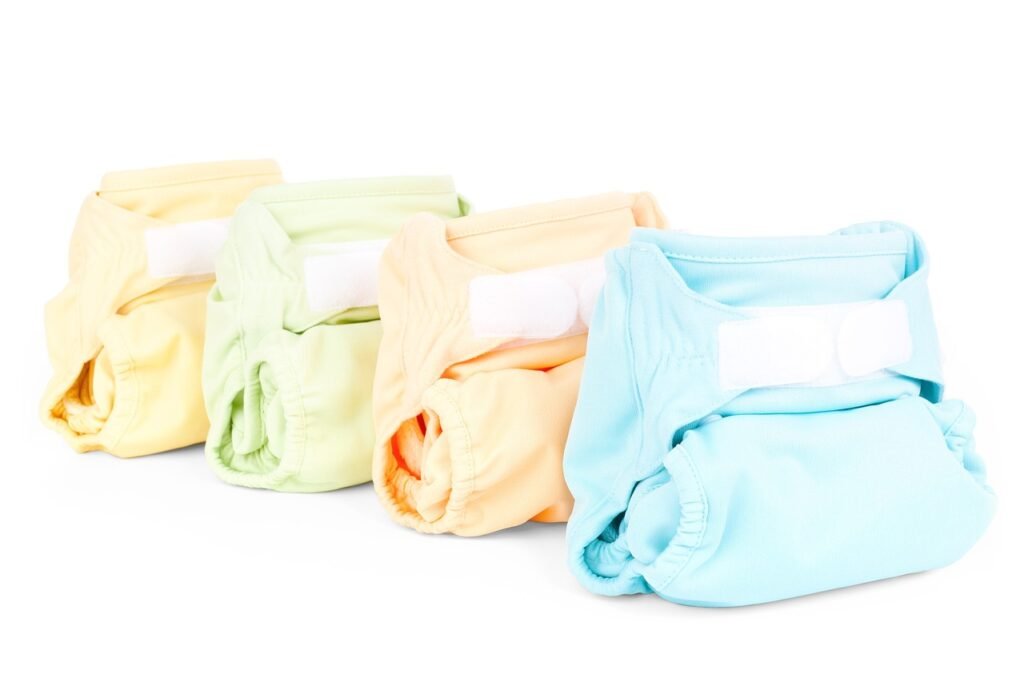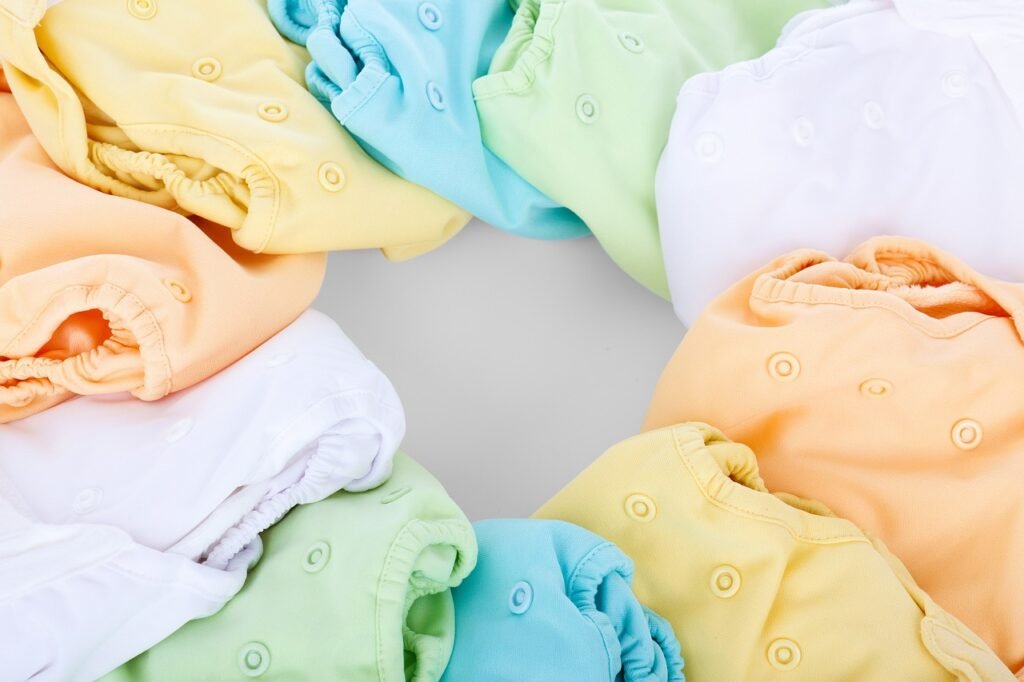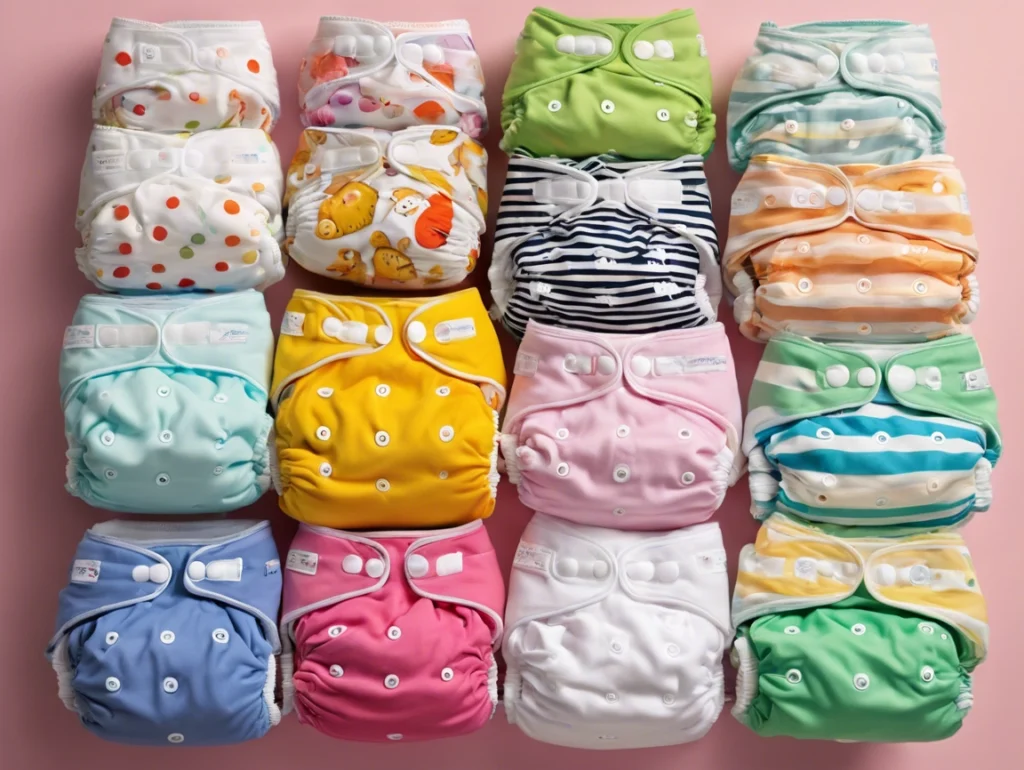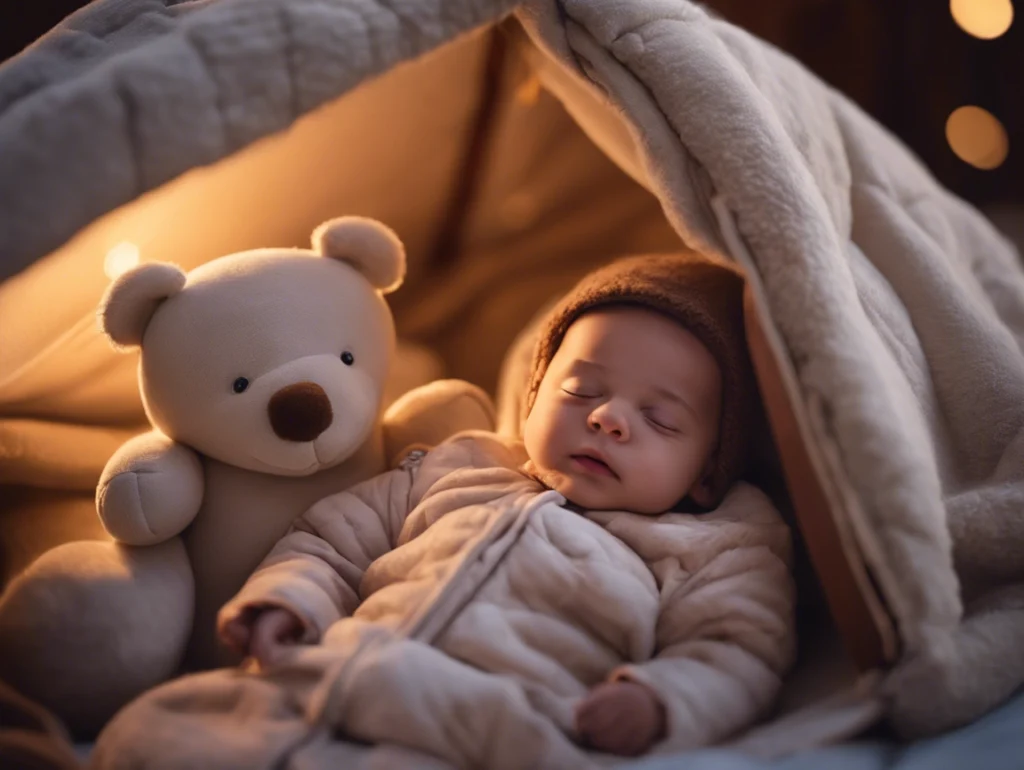Cloth diapers may seem like a thing of the past, but they are making a comeback! With growing concerns over environmental sustainability, health benefits, and rising disposable diaper costs, more and more parents are turning to cloth diapers as a practical and eco-friendly solution. This guide will walk you through everything you need to know to get started with cloth diapering, from their fascinating history to the nitty-gritty details of how to use and care for them.

Why Choose Cloth Diapers?
Choosing cloth diapers is not just about reducing waste—though that’s a big reason! Cloth diapers are also great for your baby’s health, free from the harsh chemicals often found in disposables, and can save you a significant amount of money over time. Plus, they come in cute designs—so your baby can look stylish while staying eco-conscious!
1. History of Cloth Diapers
Ancient Practices
Believe it or not, cloth diapers have been around for centuries! In ancient civilizations, parents used natural materials like cloth, moss, and even animal skins to keep their little ones dry. The concept of “diapering” was simple but effective—wrap a piece of cloth around your baby and secure it.
Evolution Through the Ages
Cloth diapering underwent significant transformations over the years. Here’s a quick timeline:
| Era | Key Development |
|---|---|
| 1800s | Simple cotton cloths, often secured with pins. |
| 1930s | Introduction of rubber pants for extra leak protection. |
| 1940s-50s | World Wars create demand for diaper services. |
| 1970s | Disposable diapers become widely available, leading to a decrease in cloth diaper use. |
| 1990s-Present | Resurgence of cloth diapers, with improvements in materials, designs, and eco-consciousness. |
As you can see, cloth diapers have evolved quite a bit over the years—from simple cloth squares to advanced, stylish options.
2. Understanding Cloth Diapers
How Cloth Diapers Work
Cloth diapers are typically made of absorbent fabrics that keep moisture away from your baby’s skin. They work by using layers of fabric that absorb pee, while also providing a waterproof outer layer to keep everything contained.
Types of Cloth Diapers
Here’s a rundown of the main cloth diaper styles you’ll encounter:
| Type | Description | Pros |
|---|---|---|
| Prefolds | Flat pieces of fabric that need folding and are secured with pins or a Snappi. | Inexpensive, highly absorbent. |
| Fitteds | Shaped diapers with elastic around the legs and waist. | Easy to use, great fit. |
| All-in-Ones | Diapers with absorbent layers and waterproof covers built in. | No extra work, simple, fast. |
| Hybrids | A combination of cloth and disposable options. | Flexible, good for travel or daycare. |
3. How to Use Cloth Diapers
If you’re ready to dive in, here’s a simple step-by-step guide:
- Wrap It Up:
For prefolds and fitteds, you’ll need to fold the diaper and place it inside a waterproof cover. For all-in-ones, just put them on like a disposable diaper. - Secure It:
Cloth diapers typically secure with snaps, Velcro, or pins. Make sure it’s snug but not too tight—comfort is key! - Washing and Care:
- Pre-Rinse: Always rinse your cloth diapers before washing to get rid of the heavy soiling.
- Main Wash: Use a baby-safe detergent (avoid fabric softeners and bleach).
- Drying: Hang them out to dry if possible, or tumble dry on low heat.

4. Cloth Diapers vs. Disposable Diapers
Cost Analysis
Cloth diapers may seem like a hefty investment upfront, but they can save you money in the long run. Here’s a breakdown:
| Expense | Cloth Diapers | Disposable Diapers |
|---|---|---|
| Initial Cost | $300-$500 for a full set (20-30 diapers). | $500-$900 per year for disposable diapers. |
| Maintenance | Water, detergent, and electricity, but cheaper than buying disposables each month. | Ongoing purchase of disposables, no long-term savings. |
| Total Savings | Can save $2,000+ over the life of your baby. | Continuous expense with no return. |
Environmental Impact
Did you know disposables take hundreds of years to decompose? Cloth diapers, on the other hand, can be reused multiple times, reducing the waste in landfills. Plus, many cloth diapers are made from natural, organic materials.
Health Considerations
Disposable diapers often contain chemicals like chlorine, dyes, and fragrances that can irritate your baby’s skin. Cloth diapers, made from natural fibers, reduce the chances of diaper rash and are gentler on sensitive skin.
5. Choosing the Right Cloth Diaper
Fit and Sizing Guide
The fit of a cloth diaper is essential to keep leaks at bay. Babies come in all shapes and sizes, so make sure to choose the correct size:
| Age | Cloth Diaper Size |
|---|---|
| Newborn | Newborn or Small |
| Infant | Medium |
| Toddler | Large or One-Size (adjustable) |
Fabric Breakdown
The fabric of your cloth diaper matters more than you might think. Some common fabric types include:
| Fabric Type | Features |
|---|---|
| Cotton | Soft, breathable, and highly absorbent. |
| Bamboo | Natural, eco-friendly, and antimicrobial. |
| Hemp | Very absorbent and durable. |
| Microfiber | Quick-drying, but less breathable. |
6. Cleaning and Maintenance
Washing Instructions
To keep your diapers clean and fresh:
- Wash on a warm cycle with baby-safe detergent.
- Avoid fabric softeners, which can reduce absorbency.
Stain Removal Tips
Stains are inevitable, but don’t worry—sunlight is your best friend! Hang diapers outside to dry in the sun, and the stains will naturally fade away.
7. Essential Accessories for Cloth Diapering
To make your cloth diapering journey easier, consider these must-have accessories:
| Accessory | Use |
|---|---|
| Wet Bags | For storing used diapers on the go. |
| Linters | For extra protection and absorbency. |
| Snappi Fasteners | Alternative to pins for easier diaper closure. |
8. Common Questions About Cloth Diapers
Q: Can I use cloth diapers at night?
A: Absolutely! Overnight cloth diapers are a great solution for long stretches of sleep. Use extra absorbent layers or a fitted diaper designed for night use.
Q: How many diapers will I need?
A: You’ll want at least 20-24 diapers for a good rotation, depending on how often you plan to wash.
Q: What if my baby has a diaper rash?
A: Cloth diapers are actually great for preventing diaper rash, but if it does occur, give your baby’s skin a break from diapers as much as possible and use a natural diaper ointment.
Conclusion
Cloth diapers might take a little getting used to, but once you’re in the swing of things, they’re easy to use, cost-effective, and environmentally friendly. With a variety of styles and fabrics to choose from, there’s a cloth diaper for every baby and parent. So, if you’re looking to make the switch to a more sustainable diapering option, cloth diapers are definitely worth considering!
For more helpful tips and eco-friendly parenting solutions, check out our guide on eco-friendly baby products and get started today!


